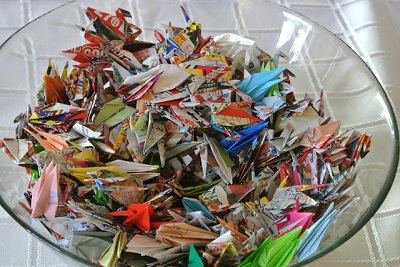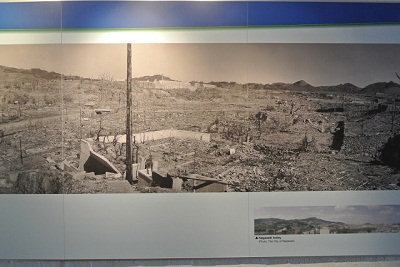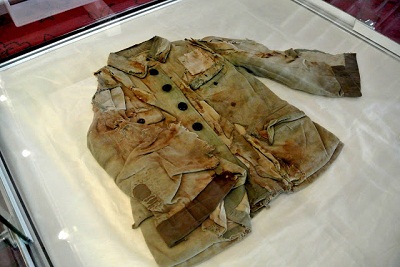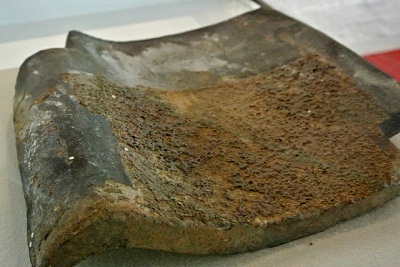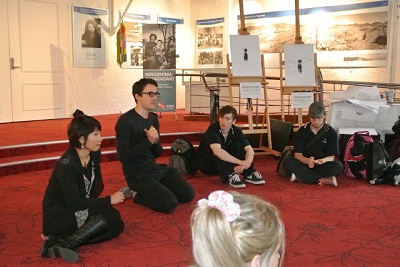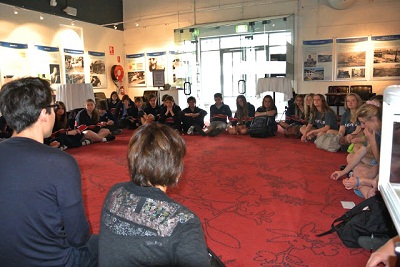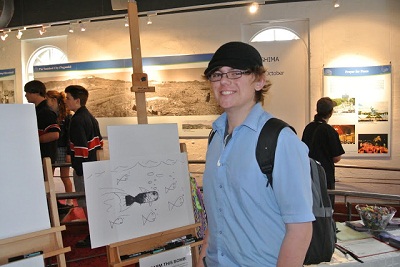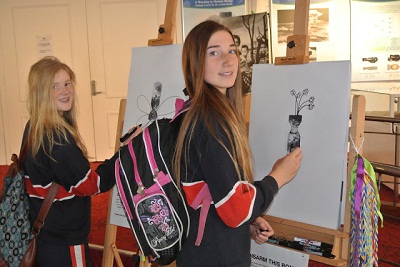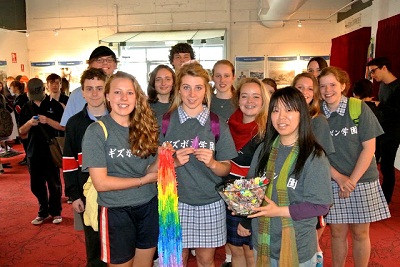“The destruction was breathtaking; the way the people of Hiroshima regrouped was admirable … it’s amazing to be making a difference.”
Amy Hodson , Gisborne Secondary College
A younger generation has found a wonderful way to respond to a dreadful episode in history – the atomic bombing of Hiroshima and Nagasaki – they fold paper cranes.
Sadako Sasaki, a famous victim of the A-bomb dropped on Hiroshima, survived the blast but not the black rain to follow. She began making paper cranes believing that her wish to recover from leukaemia might come true by folding one thousand paper cranes. Sadly, she died but her friends continued, in her memory, to campaign for peace by making origami cranes.
Visiting the Children’s Peace Monument in the Hiroshima Peace Park is a moving experience. The monument, dedicated to Sadako, is alive with colour from the multitude of tiny paper cranes that it is filled with. There is also a bell in the shape of a golden crane for visitors to ring, and its gentle chime can be heard all day long.
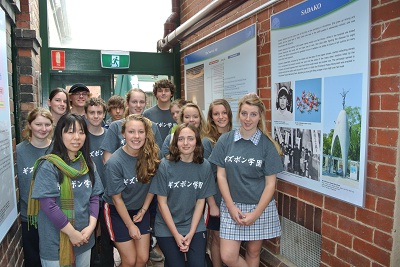
Noriko Ikaga and the students who delivered one thousand paper cranes to the Children’s Peace Monument in Hiroshima gather around the Sadako Sasaki exhibit at Gasworks Art Park.
Noriko Ikaga, a teacher at Gisborne Secondary College, has recently returned from Japan after taking thirteen students to Hiroshima to place one thousand paper cranes at the memorial.
Noriko and her senior students visited the touring Hiroshima exhibition at Gasworks Art Park in Albert Park. It is sponsored by: International Campaign to Abolish Nuclear Weapons (ICAN), Hiroshima Peace Museum, Medical Association for Prevention of War, Japanese for Peace and Gasworks Art Park.
The exhibition shows many photographs of the ruins in Hiroshima and Nagasaki, victims and other pictures that tell a tale of innocent suffering. Sadako’s story is displayed on the wall of the gallery.
School uniform: Hirishoma Exhibition, Gasworks Art Park
Although the devastation of the cities was so complete only a small number of artefacts survived, there are a handful of items that show the breathtaking force of the A-bomb, and the hardship that followed.
Roof tile melted by heat from A-bomb: Hirishoma Exhibition, Gasworks Art Park
A charred tile, for instance, reveals the intensity of the heat generated by the explosion. There is a small, burnt school uniform worn by a boy at the time of the explosion who died days later, shortly after he was found by his family.
It is hard to comprehend the level of suffering caused in an instant. ‘People shouldn’t have been put through that,’ says Jessica Mundy, a student who visited Japan.
Tony Wright from ICAN and Kazuyo Preston fron Japanese for Peace speak to students from Gisborne Secondary College.
Tim Wright, director of ICAN in Australia spoke at length to the Gisborne students visiting the exhibition.
A student from Gisborne Secondary College sketches for the ICAN ‘Bombs No More’ competition.
Others were keen to join in the “Bombs No More” competition, another ICAN initiative to bring awareness to their work for the disarmament of the estimated 19,000 nuclear weapons that remain active.
Students from Gisborne Secondary College draw sketches for the ICAN ‘Bombs No More’ competition.
“Bombs No More” involves changing a picture of an atomic bomb. The sketches will be scanned, and placed on the ICAN website. All international entries will be judged by the prominent peace activists, Desmond Tutu and Jodie Williams, next year.
Caitlan Fowler is a Gisborne student who toured Japan. She had this to stay at the end of her visit to the Hiroshima exhibition.
“Standing next to the A-bomb Dome and Peace Museum in Hiroshima was a wake-up call.”
Norika Ikaga and Gisborne Secondary College students with paper cranes they will deliver to Julia Gillard.
Meanwhile, the student group from Gisborne, inspired by their trip, have been hard at work making paper cranes, and will deliver one thousand to the Australian Prime Minister, Julia Gillard. This follows on from the successful campaign by ICAN to send paper cranes to national leaders in all parts of the world.
Hiroshima at Gasworks Arts Park will show in Melbourne till October 27.
Story and photos: Peter Dewar
HIROSHIMA
FREE PUBLIC EXHIBITION
Date: 9 – 27 Oct
Admission: Free
Venue: Gasworks Arts Park, Cnr Graham and Pickles St, Albert Park
Website: gasworks.org.au
Enquiries: info@icanw.org or 03 9347 4795
Sponsored by: The International Campaign to Abolish Nuclear Weapons (ICAN), International Campaign, Hiroshima Peace Museum, Medical Association for Prevention of War, Japanese for Peace and Gasworks Arts.
BOMBS NO MORE Competition: http://icanw.org/bombsnomore



